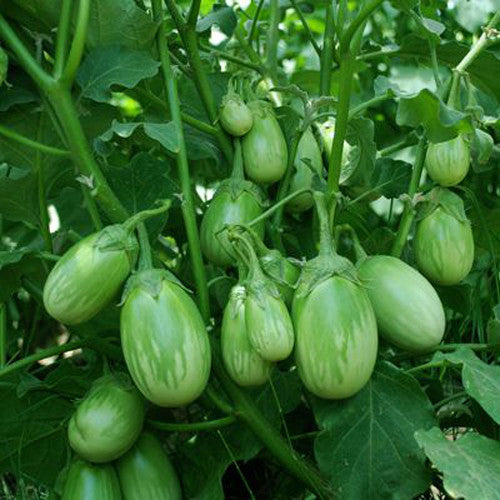Brinjal (Gota) – Round desi variety with glossy purple skin
Propagation
The best option may be to start your own eggplant seedlings from seed. Sow seeds in seedling trays or small plastic container to make transfer of seedlings easier into larger pots later on. Use a watering can to water the brinjals seeds thoroughly after sowing. Brinjals seeds take about ten to fourteen days to germinate. After germination the brinjal seedlings will require a further five weeks in the seed trays before they can be transplanted. In those five weeks the brinjals seedlings would have grown as high as the knuckle of your index finger. At this stage the brinjal seedlings is ideal candidates for transplanting into a garden bed or even a container, depending on where you plan on cultivating your brinjals. Plant the brinjal seedlings slightly deeper than it stood in the seedbed or seed tray where you are transplanting them from.
How to grow in Container
Choose a large pot to house your mature eggplant. The pot must have a 20-liter capacity, at minimum, and each eggplant should have approximately 1 foot of space to grow. As a result, you may wish to plant only one eggplant per pot.
Opt for a clay pot. Clay pots are also heavier than plastic pots, making it easier for them to support the weight of a mature eggplant. The pot should also have large drainage holes to help balance out the moisture level of the soil. Drainage holes will allow excess water to leave the pot, minimizing the risk of root rot.
Soil
Brinjal grows best in well drained clay loam, silt loam or loamy soil. Soil should be loosely placed into the containers, but it should not be compressed.
Caring
Most seedling pests can be controlled organically with insecticidal soap. If you’re concerned about damping off, try watering your eggplant seedlings regularly (about once per week) with a chamomile tea solution. Keep an eye for pests. Cutworms are one of the most common pests that attack eggplants, but they can usually be driven away by placing a cutworm collar over the plant. You may also consider an organic pesticide to drive away cutworms and many other pests.
Sowing Time
- May-June
- Oct-Nov
- Jan-Feb













